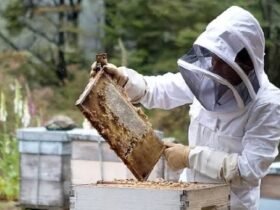If you’re a plant enthusiast or someone with an interest in unique flora, you may have heard of dudokkidzo—a fascinating and beautiful plant that requires a little extra care to thrive. Knowing how to keep healthy can be a game-changer, ensuring it grows vibrant and strong. This guide will provide you with the essential information, tips, and strategies to ensure your remains in top condition.
What Is Dudokkidzo?
Dudokkidzo, though not a common household name, is a plant that captures the attention of many with its unique foliage and adaptability. While not many are familiar with this species, its distinct characteristics make it an exciting addition to any garden or indoor plant collection. Whether you’re a seasoned gardener or just starting, learning can be a rewarding experience.
Understanding Its Growing Needs
1. Light Requirements
One of the most crucial aspects of healthy is understanding its light requirements. Dudokkidzo thrives in bright, indirect sunlight. If placed in a location that gets too much direct sunlight, the plant may develop scorched leaves. On the other hand, insufficient light will lead to leggy growth and weak stems. Therefore, it’s important to place your dudokkidzo in an area where it can receive filtered sunlight throughout the day.
2. Temperature Preferences
Dudokkidzo prefers moderate to warm temperatures. The ideal range for this plant is between 65°F to 75°F (18°C to 24°C). Avoid placing it in areas with drafts or extreme temperature fluctuations. For example, areas near air conditioning units or heaters should be avoided. Maintaining consistent temperatures is key to happy and thriving.
3. Humidity Levels
As a tropical plant, dudokkidzo appreciates high humidity. If you live in a dry climate or during the winter months when indoor air can be quite dry, increasing the humidity around your plant can be essential. This can be done through methods like placing a humidifier nearby or using a humidity tray filled with water and pebbles. Regular misting is another way to boost humidity levels. However, be careful not to overdo it, as excessive moisture on the leaves may lead to mold or mildew.
Watering Your Dudokkidzo
Proper watering is vital for flourishing. This plant prefers its soil to be kept slightly moist, but not soggy. Overwatering can lead to root rot, while underwatering can cause the leaves to wilt. The best approach is to check the soil’s moisture by sticking your finger into the soil about 2 inches deep. If the soil feels dry at that depth, it’s time to water. During the winter months, you may need to reduce watering frequency since the plant’s growth slows down.
4. Soil Requirements
Dudokkidzo thrives in well-draining soil. A good mixture includes a combination of potting soil, perlite, and sand to enhance drainage. The right soil type helps prevent water from accumulating at the roots, which can otherwise lead to rot. Additionally, consider repotting your dudokkidzo every couple of years to refresh the soil and give the plant more space to grow.
Fertilizing for Optimal Growth
Although dudokkidzo is not a heavy feeder, it benefits from regular fertilizing, especially during the growing season (spring through summer). A balanced, liquid houseplant fertilizer works well. Dilute the fertilizer to about half-strength to avoid overfeeding the plant. Applying fertilizer every 4 to 6 weeks will provide the necessary nutrients to keep your dudokkidzo looking lush.
Pruning and Maintenance
Keeping your dudokkidzo in its best shape also involves occasional pruning. Dead or yellowing leaves should be removed regularly to prevent diseases and pests. By doing this, you also encourage new growth. If your plant becomes too leggy or overgrown, trimming back the stems will help maintain a tidy appearance. Furthermore, pruning encourages a fuller, bushier plant.
Watch for Common Pests
Though dudokkidzo is generally pest-resistant, it’s still important to keep an eye out for common indoor plant pests such as spider mites, aphids, and mealybugs. If you notice any signs of infestation, such as yellowing leaves or sticky residue on the plant, treat it with an appropriate insecticidal soap or neem oil. Regularly inspecting your plant will help you catch problems early.
Why Regular Monitoring Is Essential
When it comes to how to keep dudokkidzo healthy, regular monitoring is essential. Keep an eye on its overall appearance, including the color of the leaves, the presence of pests, and the general growth pattern. This will allow you to catch potential issues before they escalate, ensuring your dudokkidzo stays in great shape.
Conclusion
Learning how to keep dudokkidzo involves understanding its unique needs and adjusting your care routine accordingly. From light and temperature to humidity and soil requirements, these plants thrive when provided with the right environment. Regular monitoring, proper watering, and fertilization are key factors to maintaining its health. With a little attention and care, your dudokkidzo can flourish and become a stunning focal point in your home or garden.
FAQs
- How often should I water my dudokkidzo?
Water your dudokkidzo when the top 2 inches of soil feel dry to the touch. In winter, reduce the frequency as the plant’s growth slows down. - Can dudokkidzo be kept in low light?
While it can tolerate lower light conditions, it thrives best in bright, indirect sunlight. - What humidity level is best for dudokkidzo?
Dudokkidzo prefers high humidity. Aim to maintain humidity levels above 50% for optimal growth. - How can I prevent pests on my dudokkidzo?
Regularly inspect your plant for pests and treat any infestations promptly with insecticidal soap or neem oil. - When should I repot my dudokkidzo?
Repot your dudokkidzo every 1-2 years or when it becomes root-bound in its current pot.












Leave a Reply